Wake of Elongated Low-Rise Building at Oblique Incidences
Abstract
:1. Introduction
2. Methodology
2.1. Wind Tunnel Experiments
2.2. Particle Image Velocimetry (PIV) Measurement
2.3. Computational Fluid Dynamics (CFD) Simulation
3. Results and Discussion
3.1. Three-Dimensional Mean Wake Deflection
3.1.1. Mean Wake Deflection Phenomenon
3.1.2. Streamwise Development of Lateral Wake Deflection
3.1.3. Vertical Variation of Lateral Wake Deflection
3.2. Aviation Risk Assessment
3.2.1. Verification of Existing Criteria
3.2.2. Exceedance Probability Analysis
4. Concluding Remarks
Author Contributions
Funding
Institutional Review Board Statement
Informed Consent Statement
Data Availability Statement
Conflicts of Interest
References
- Mizota, T.; Okajima, A. Experimental studies of time mean flows around rectangular prisms. In Proceedings of the Japan Society of Civil Engineers; Japan Society of Civil Engineers: Tokyo, Japan, 1981; Volume 312, pp. 39–47. [Google Scholar]
- Okajima, A. Strouhal numbers of rectangular cylinders. J. Fluid Mech. 1982, 123, 379–398. [Google Scholar] [CrossRef] [Green Version]
- Sakamoto, H.; Arie, M. Vortex shedding from a rectangular prism and a circular cylinder placed vertically in a turbulent boundary layer. J. Fluid Mech. 1983, 126, 147–165. [Google Scholar] [CrossRef]
- Sakamoto, H.; Oiwake, S. Fluctuating Forces on a Rectangular Prism and a Circular Cylinder Placed Vertically in a Turbulent Boundary Layer. J. Fluids Eng. 1984, 106, 160–166. [Google Scholar] [CrossRef]
- Wang, H.F.; Zhou, Y. The finite-length square cylinder near wake. J. Fluid Mech. 2009, 638, 453–490. [Google Scholar] [CrossRef] [Green Version]
- Sattari, P.; Bourgeois, J.A.; Martinuzzi, R.J. On the vortex dynamics in the wake of a finite surface-mounted square cylinder. Exp. Fluids 2012, 52, 1149–1167. [Google Scholar] [CrossRef]
- Sumner, D.; Rostamy, N.; Bergstrom, D.; Bugg, J. Influence of aspect ratio on the mean flow field of a surface-mounted finite-height square prism. Int. J. Heat Fluid Flow 2017, 65, 1–20. [Google Scholar] [CrossRef]
- Wang, F.; Lam, K.M. Geometry effects on mean wake topology and large-scale coherent structures of wall-mounted prisms. Phys. Fluids 2019, 31, 125109. [Google Scholar] [CrossRef]
- Igarashi, T. Characteristics of the Flow around a Square Prism. Bull. JSME 1984, 27, 1858–1865. [Google Scholar] [CrossRef]
- Huang, R.F.; Lin, B.H.; Yen, S.C. Time-averaged topological flow patterns and their influence on vortex shedding of a square cylinder in crossflow at incidence. J. Fluids Struct. 2010, 26, 406–429. [Google Scholar] [CrossRef]
- Yen, S.C.; Yang, C.W. Flow patterns and vortex shedding behavior behind a square cylinder. J. Wind. Eng. Ind. Aerodyn. 2011, 99, 868–878. [Google Scholar] [CrossRef]
- Unnikrishnan, S.; Ogunremi, A.; Sumner, D. The effect of incidence angle on the mean wake of surface-mounted finite-height square prisms. Int. J. Heat Fluid Flow 2017, 66, 137–156. [Google Scholar] [CrossRef]
- Bourgeois, J.A.; Sattari, P.; Martinuzzi, R.J. Alternating half-loop shedding in the turbulent wake of a finite surface-mounted square cylinder with a thin boundary layer. Phys. Fluids 2011, 23, 095101. [Google Scholar] [CrossRef]
- Castro, I.P.; Robins, A.G. The flow around a surface-mounted cube in uniform and turbulent streams. J. Fluid Mech. 1977, 79, 307–335. [Google Scholar] [CrossRef]
- Hillier, R.; Cherry, N.J. The effects of stream turbulence on separation bubbles. J. Wind. Eng. Ind. Aerodyn. 1981, 8, 49–58. [Google Scholar] [CrossRef]
- Ballio, F.; Bettoni, C.; Franzetti, S. A Survey of Time-Averaged Characteristics of Laminar and Turbulent Horseshoe Vortices. J. Fluids Eng. 1998, 120, 233–242. [Google Scholar] [CrossRef]
- Wang, H.F.; Zhou, Y.; Chan, C.K.; Lam, K.S. Effect of initial conditions on interaction between a boundary layer and a wall-mounted finite-length-cylinder wake. Phys. Fluids 2006, 18, 065106. [Google Scholar] [CrossRef] [Green Version]
- Hosseini, Z.; Bourgeois, J.A.; Martinuzzi, R.J. Large-scale structures in dipole and quadrupole wakes of a wall-mounted finite rectangular cylinder. Exp. Fluids 2013, 54, 1595. [Google Scholar] [CrossRef]
- Li, Q.S.; Hu, G.; Yan, B.-W. Investigation of the effects of free-stream turbulence on wind-induced responses of tall building by Large Eddy Simulation. Wind. Struct. Int. J. 2014, 18, 599–618. [Google Scholar] [CrossRef]
- El Hassan, M.; Bourgeois, J.; Martinuzzi, R. Boundary layer effect on the vortex shedding of wall-mounted rectangular cylinder. Exp. Fluids 2015, 56, 33. [Google Scholar] [CrossRef]
- Hearst, R.J.; Gomit, G.; Ganapathisubramani, B. Database—Effect of turbulence on the wake of a wall-mounted cube. J. Fluid Mech. 2016, 804, 513–530. [Google Scholar] [CrossRef]
- Blocken, B.B.; Carmeliet, J. Pedestrian Wind Environment around Buildings: Literature Review and Practical Examples. J. Therm. Envel. Build. Sci. 2004, 28, 107–159. [Google Scholar] [CrossRef]
- Blocken, B.; Carmeliet, J. Pedestrian wind conditions at outdoor platforms in a high-rise apartment building: Generic sub-configuration validation, wind comfort assessment and uncertainty issues. Wind. Struct. Int. J. 2008, 11, 51–70. [Google Scholar] [CrossRef] [Green Version]
- Blocken, B. 50 years of computational wind engineering: Past, present and future. J. Wind. Eng. Ind. Aerodyn. 2014, 129, 69–102. [Google Scholar] [CrossRef]
- Zargar, A.; Gungor, A.; Tarokh, A.; Hemmati, A. Coherent structures in the wake of a long wall-mounted rectangular prism at large incident angles. Phys. Rev. Fluids 2021, 6, 034603. [Google Scholar] [CrossRef]
- Perry, S.; Heist, D.; Brouwer, L.; Monbureau, E.; Brixey, L. Characterization of pollutant dispersion near elongated buildings based on wind tunnel simulations. Atmos. Environ. 2016, 142, 286–295. [Google Scholar] [CrossRef]
- Foroutan, H.; Tang, W.; Heist, D.; Perry, S.; Brouwer, L.; Monbureau, E. Numerical analysis of pollutant dispersion around elongated buildings: An embedded large eddy simulation approach. Atmos. Environ. 2018, 187, 117–130. [Google Scholar] [CrossRef] [PubMed]
- Krüs, H.; Haanstra, J.; Van Der Ham, R.; Schreur, B. Numerical simulations of wind measurements at Amsterdam Airport Schiphol. J. Wind. Eng. Ind. Aerodyn. 2003, 91, 1215–1223. [Google Scholar] [CrossRef]
- Hong Kong Observatory (HKO). Low Level Wind Effect at Airports—Information for Pilots and Planners of New Buildings. HKP Pamphlet (2012). Available online: https://www.hko.gov.hk/en/aviat/articles/files/llw_pamphlet_3col_v17.pdf (accessed on 7 May 2021).
- Nieuwpoort, A.M.H.; Gooden, J.H.M.; de Prins, J.L. Wind Criteria due to Obstacles at and around Airports; NLR-CR-2006-261; National Aerospace Laboratory: Bengaluru, India, 2010; 200p. [Google Scholar]
- HKBD (Hong Kong Buildings Department). Code of Practice on Wind Effects in Hong Kong 2004; Institution of Structural Engineers: Hong Kong, China, 2004. [Google Scholar]
- ESDU (Engineering Sciences Data Unit). Strong Winds in the Atmospheric Boundary Layer; Part 1: Hourly Mean Wind Speeds; Data Item 82026; ESDU: London, UK, 2002. [Google Scholar]
- Snyder, W.H. Guideline for Fluid Modeling of Atmospheric Diffusion; Environmental Sciences Research Laboratory, Office of Research and Development, US Environmental Protection Agency: Washington, DC, USA, 1981; Volume 81. [Google Scholar]
- Westerweel, J. Theoretical analysis of the measurement precision in particle image velocimetry. Exp. Fluids 2000, 29, S003–S012. [Google Scholar] [CrossRef]
- Tominaga, Y. Flow around a high-rise building using steady and unsteady RANS CFD: Effect of large-scale fluctuations on the velocity statistics. J. Wind. Eng. Ind. Aerodyn. 2015, 142, 93–103. [Google Scholar] [CrossRef]
- Lin, C.; Ooka, R.; Kikumoto, H.; Sato, T.; Arai, M. CFD simulations on high-buoyancy gas dispersion in the wake of an isolated cubic building using steady RANS model and LES. Build. Environ. 2021, 188, 107478. [Google Scholar] [CrossRef]
- Becker, S.; Lienhart, H.; Durst, F. Flow around three-dimensional obstacles in boundary layers. J. Wind. Eng. Ind. Aerodyn. 2002, 90, 265–279. [Google Scholar] [CrossRef]
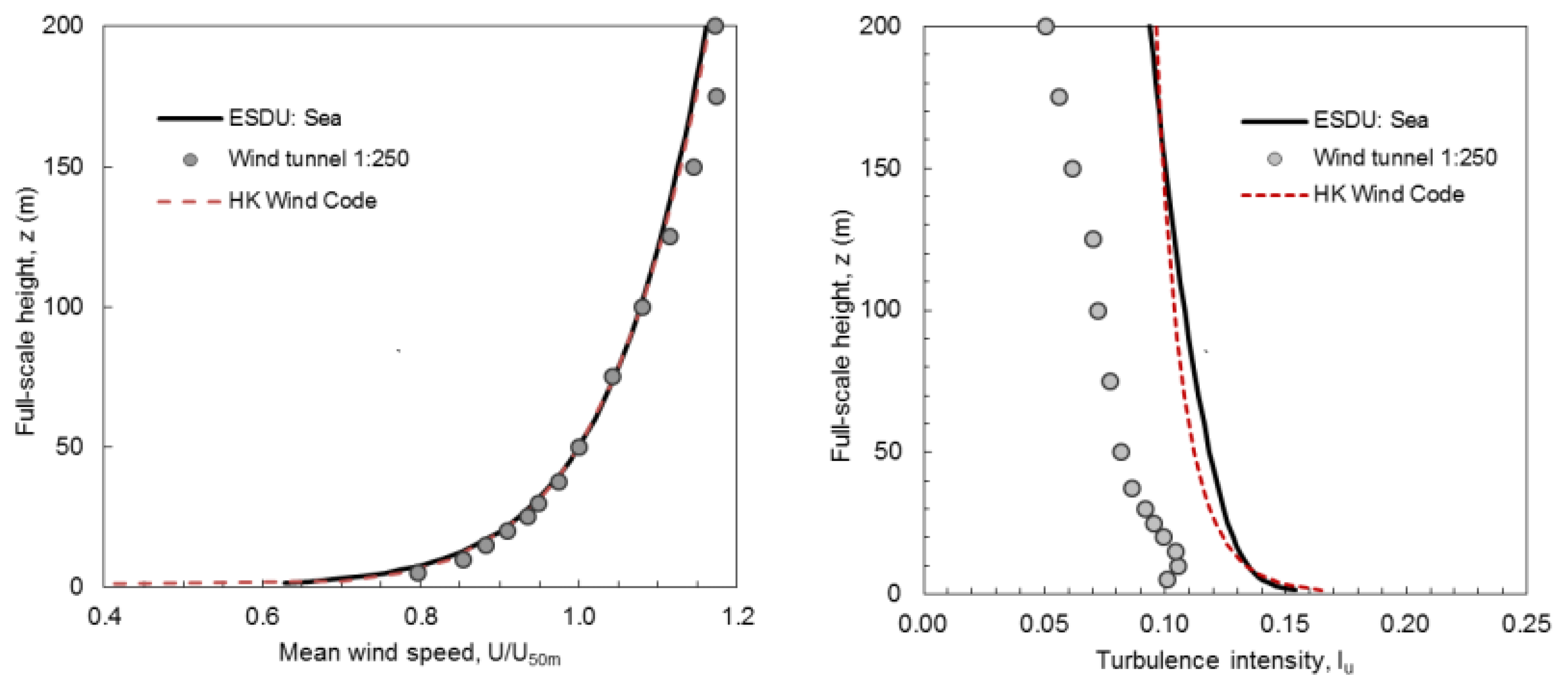
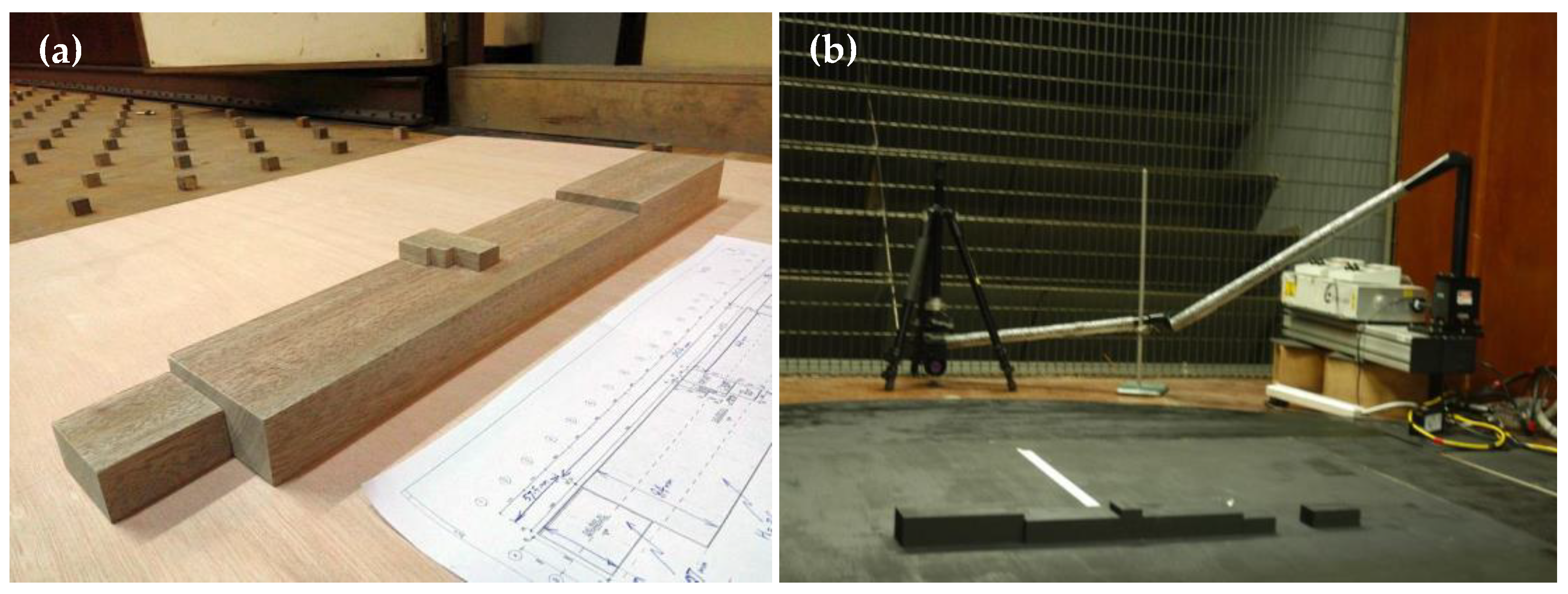
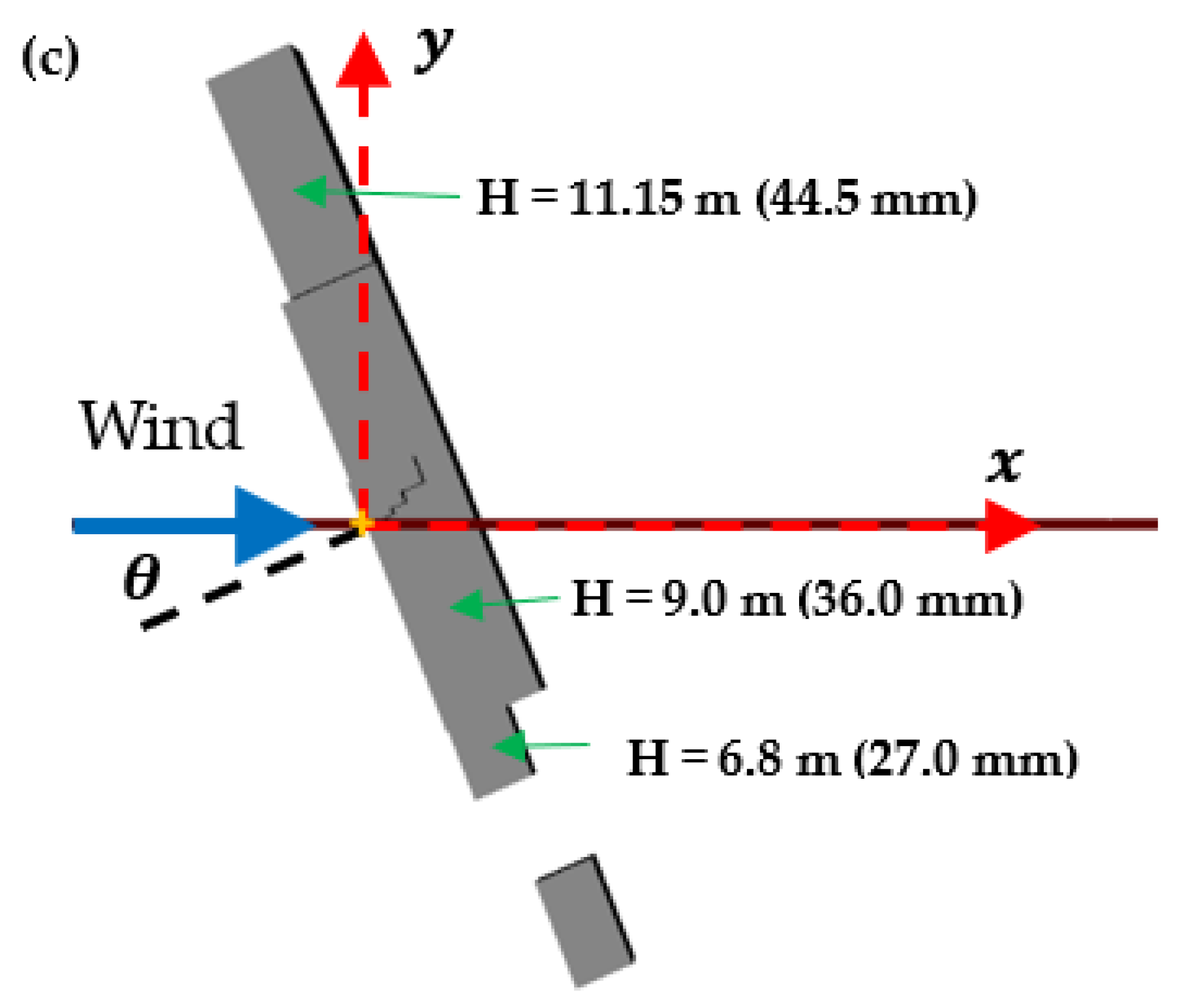
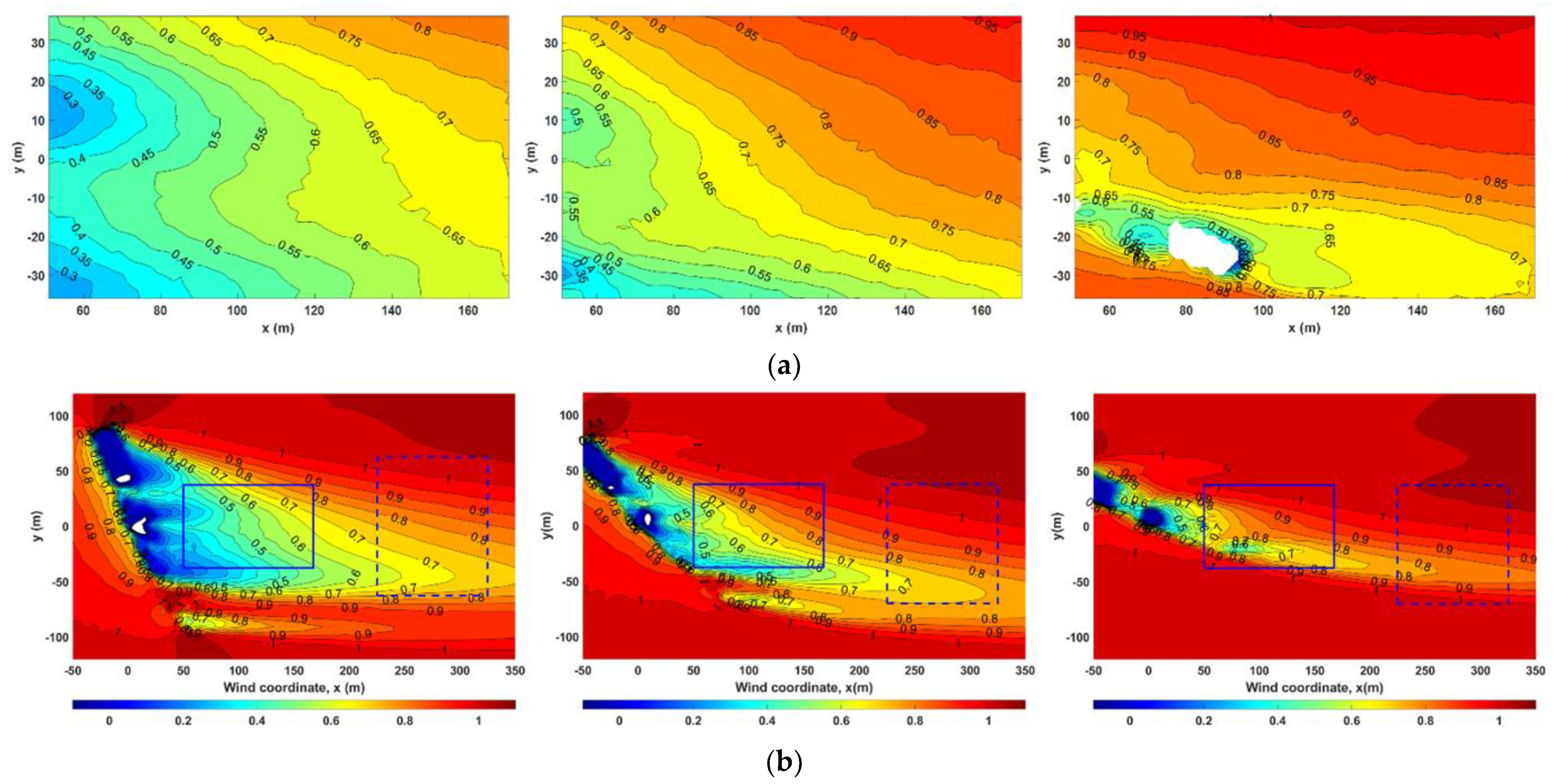
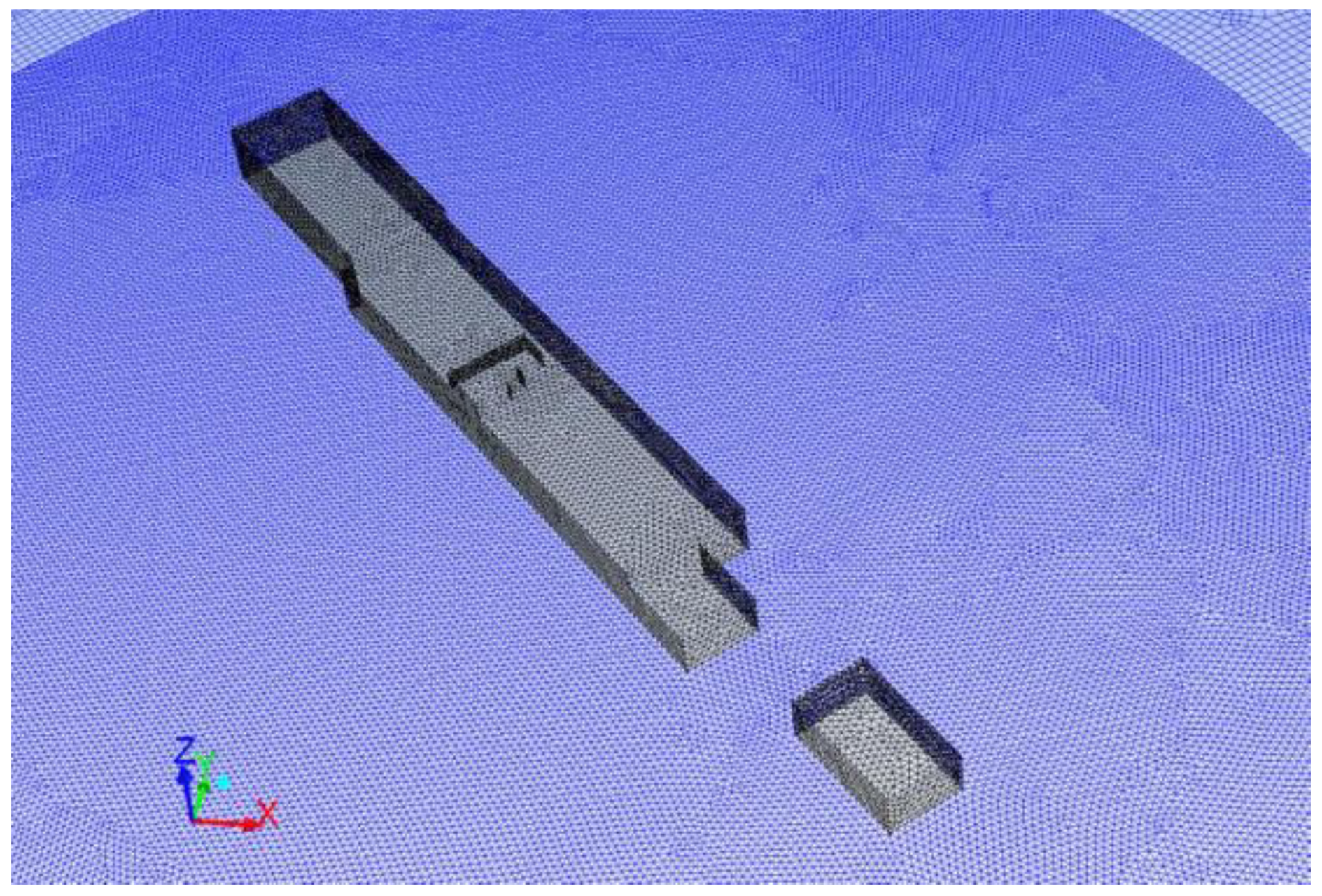


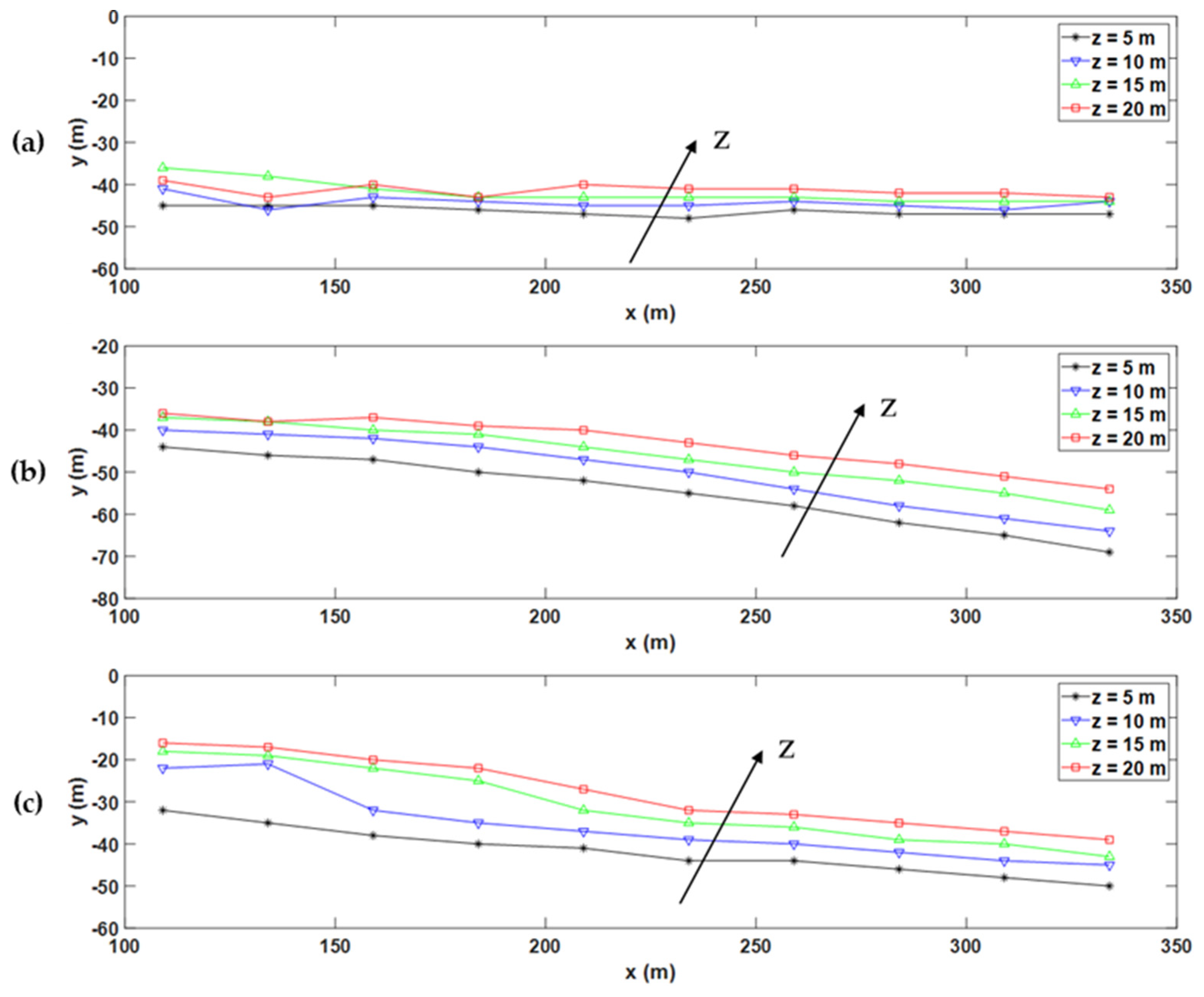
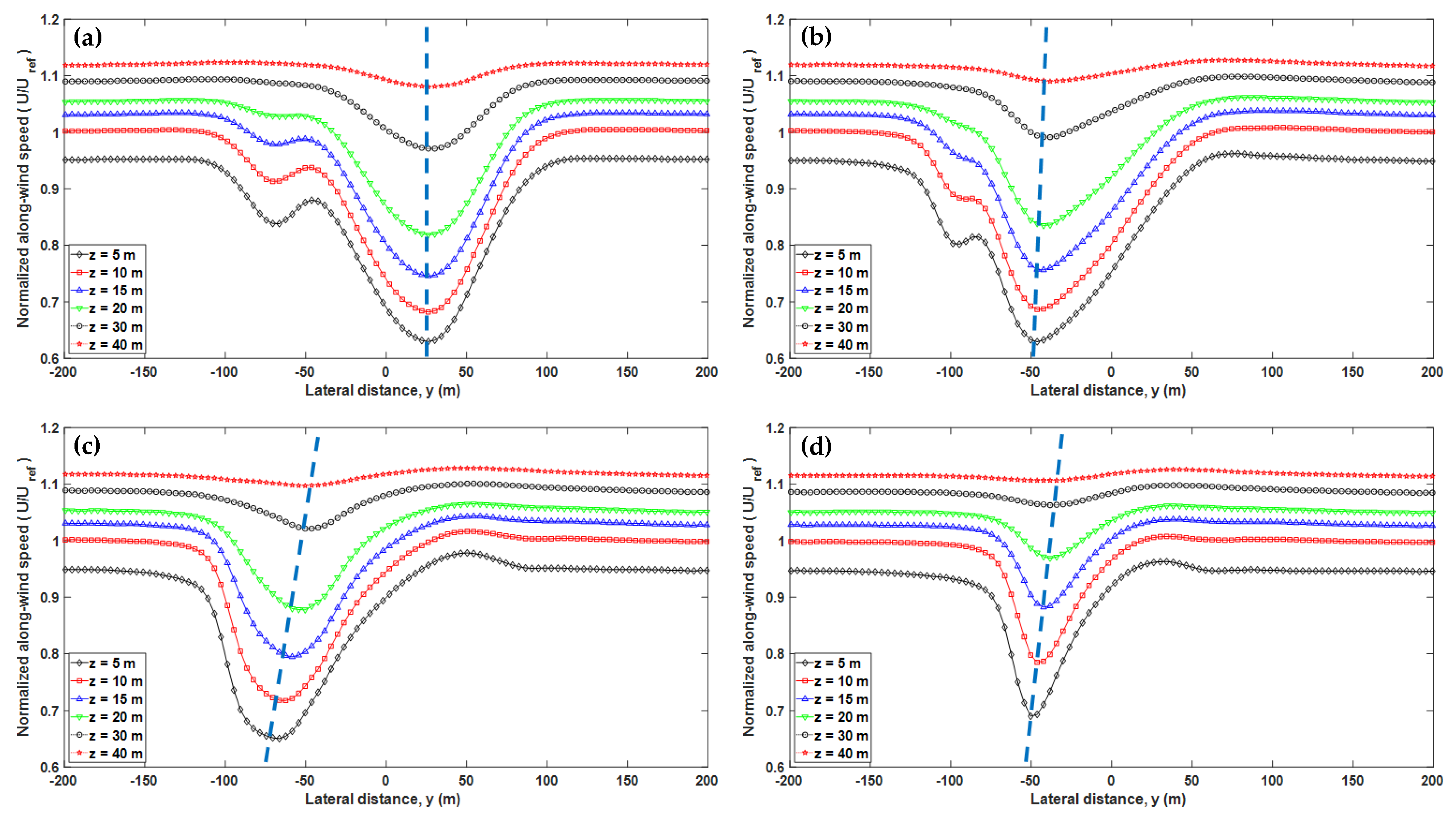
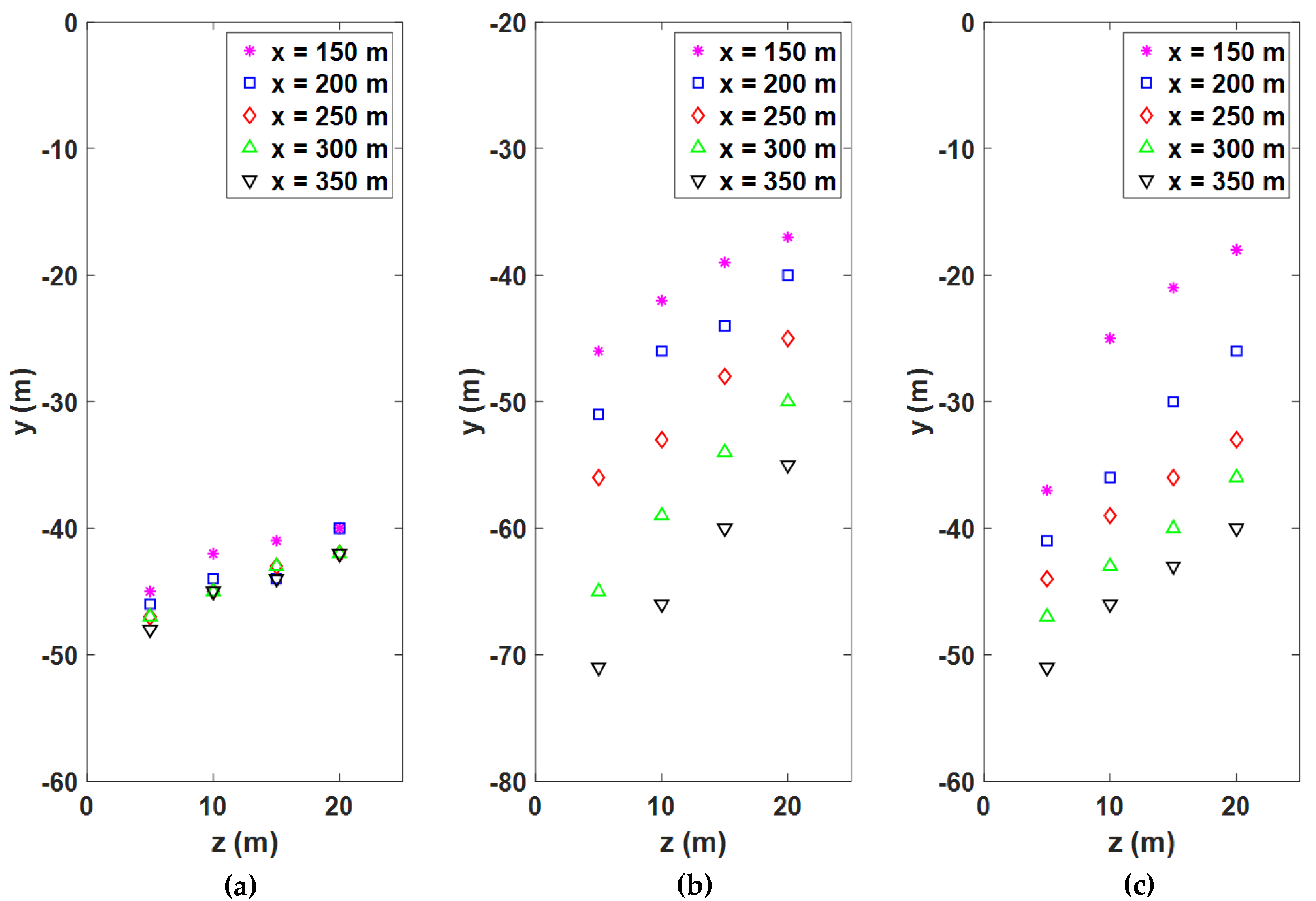
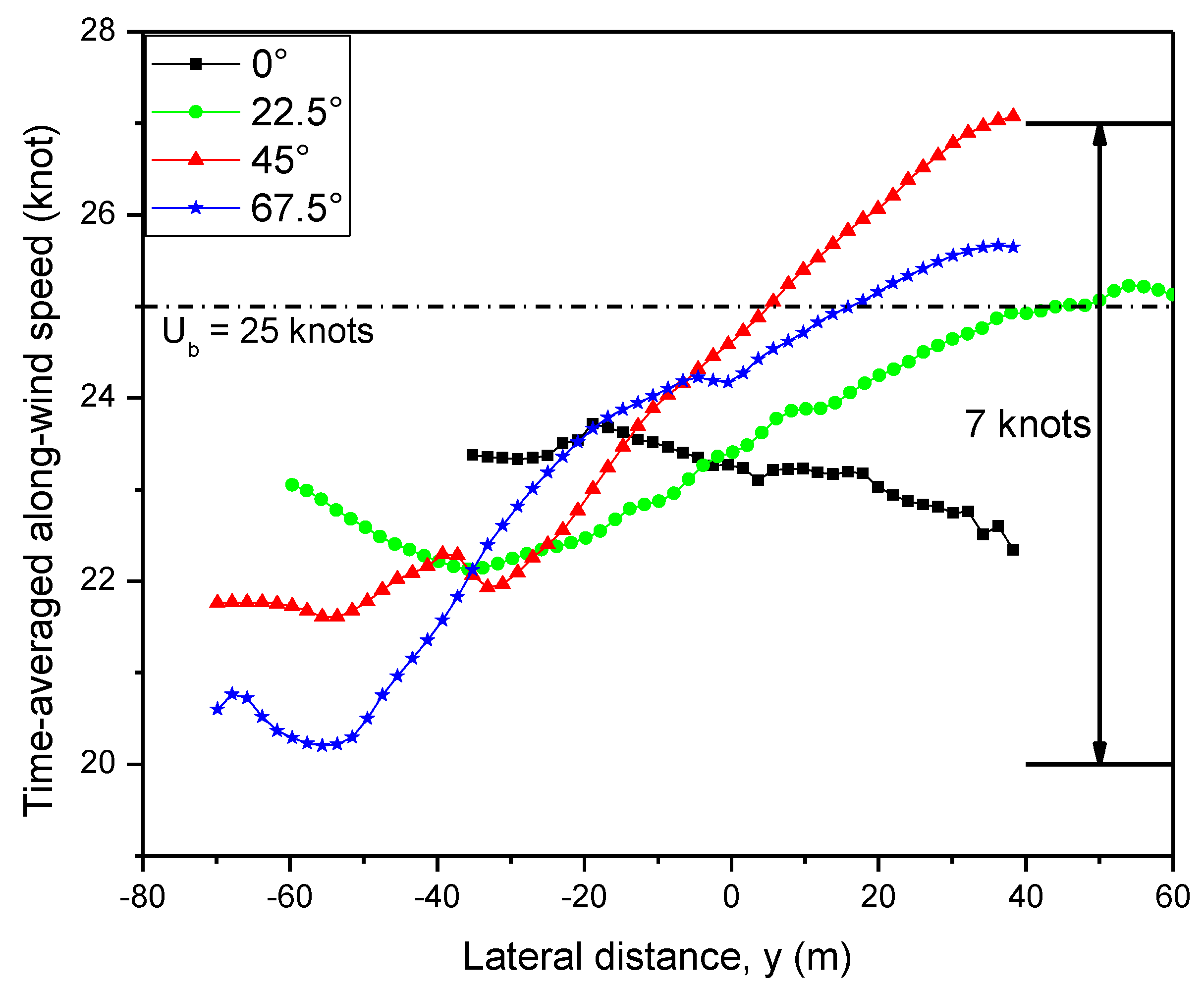
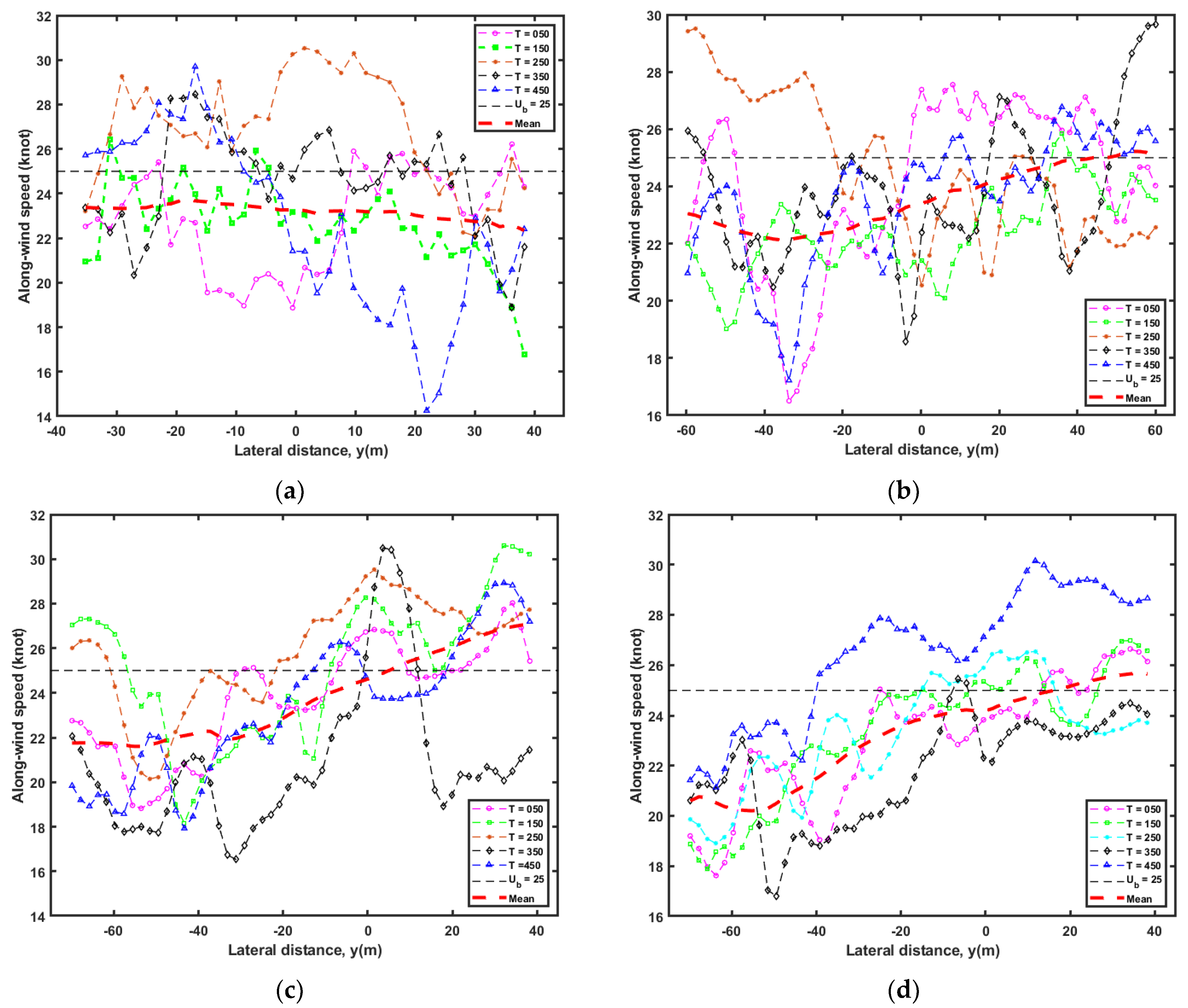
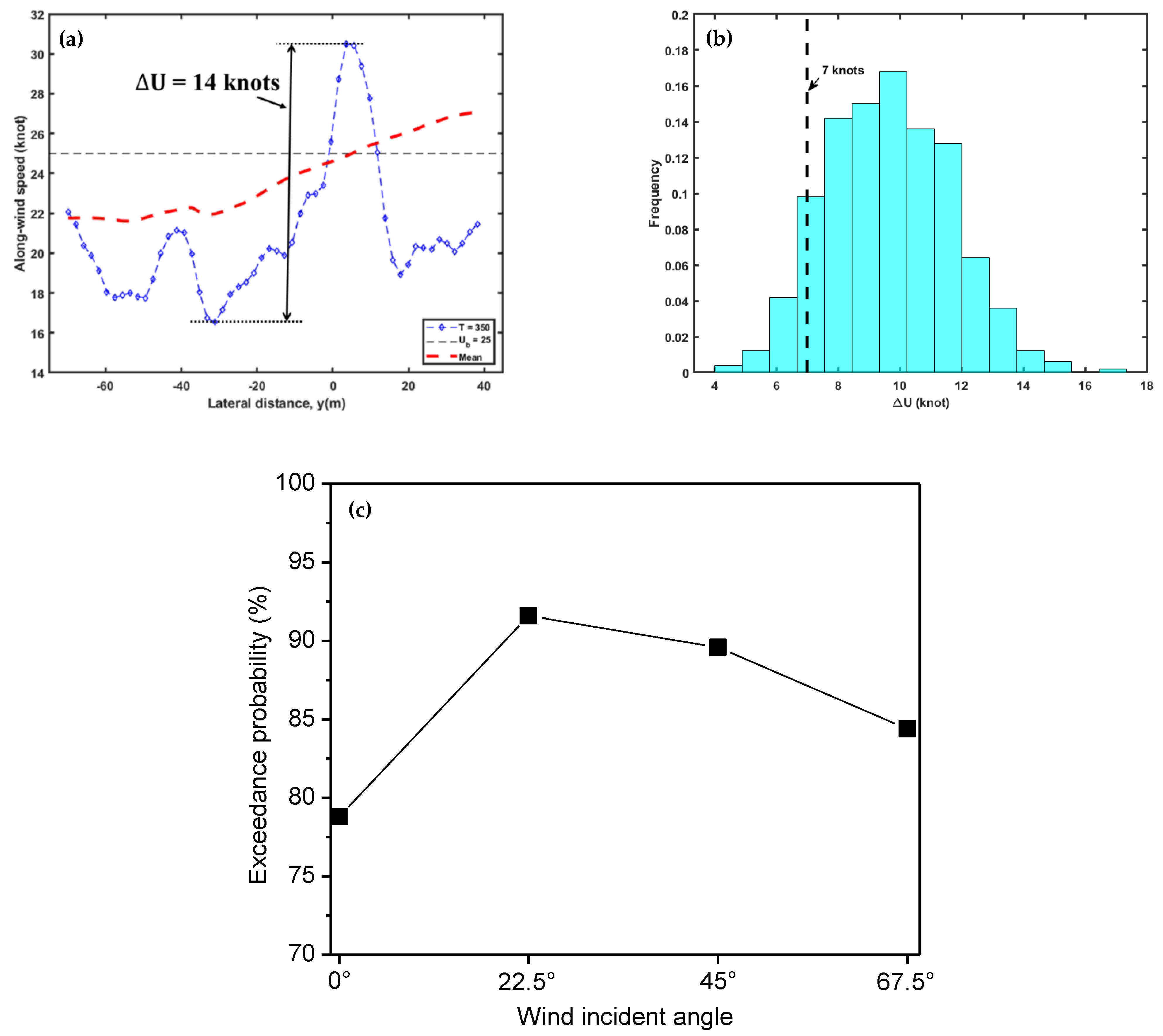

Publisher’s Note: MDPI stays neutral with regard to jurisdictional claims in published maps and institutional affiliations. |
© 2021 by the authors. Licensee MDPI, Basel, Switzerland. This article is an open access article distributed under the terms and conditions of the Creative Commons Attribution (CC BY) license (https://creativecommons.org/licenses/by/4.0/).
Share and Cite
Wang, F.; Lam, K.M. Wake of Elongated Low-Rise Building at Oblique Incidences. Atmosphere 2021, 12, 1579. https://doi.org/10.3390/atmos12121579
Wang F, Lam KM. Wake of Elongated Low-Rise Building at Oblique Incidences. Atmosphere. 2021; 12(12):1579. https://doi.org/10.3390/atmos12121579
Chicago/Turabian StyleWang, Fei, and Kit Ming Lam. 2021. "Wake of Elongated Low-Rise Building at Oblique Incidences" Atmosphere 12, no. 12: 1579. https://doi.org/10.3390/atmos12121579
APA StyleWang, F., & Lam, K. M. (2021). Wake of Elongated Low-Rise Building at Oblique Incidences. Atmosphere, 12(12), 1579. https://doi.org/10.3390/atmos12121579




